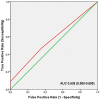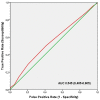Genetic profiles to identify talents in elite endurance athletes and professional football players
- PMID: 36112609
- PMCID: PMC9480996
- DOI: 10.1371/journal.pone.0274880
Genetic profiles to identify talents in elite endurance athletes and professional football players
Abstract
The genetic profile that is needed to identify talents has been studied extensively in recent years. The main objective of this investigation was to approach, for the first time, the study of genetic variants in several polygenic profiles and their role in elite endurance and professional football performance by comparing the allelic and genotypic frequencies to the non-athlete population. In this study, genotypic and allelic frequencies were determined in 452 subjects: 292 professional athletes (160 elite endurance athletes and 132 professional football players) and 160 non-athlete subjects. Genotyping of polymorphisms in liver metabolisers (CYP2D6, GSTM1, GSTP and GSTT), iron metabolism and energy efficiency (HFE, AMPD1 and PGC1a), cardiorespiratory fitness (ACE, NOS3, ADRA2A, ADRB2 and BDKRB2) and muscle injuries (ACE, ACTN3, AMPD1, CKM and MLCK) was performed by Polymerase Chain Reaction-Single Nucleotide Primer Extension (PCR-SNPE). The combination of the polymorphisms for the "optimal" polygenic profile was quantified using the genotype score (GS) and total genotype score (TGS). Statistical differences were found in the genetic distributions between professional athletes and the non-athlete population in liver metabolism, iron metabolism and energy efficiency, and muscle injuries (p<0.001). The binary logistic regression model showed a favourable OR (odds ratio) of being a professional athlete against a non-athlete in liver metabolism (OR: 1.96; 95% CI: 1.28-3.01; p = 0.002), iron metabolism and energy efficiency (OR: 2.21; 95% CI: 1.42-3.43; p < 0.001), and muscle injuries (OR: 2.70; 95% CI: 1.75-4.16; p < 0.001) in the polymorphisms studied. Genetic distribution in professional athletes as regards endurance (professional cyclists and elite runners) and professional football players shows genetic selection in these sports disciplines.
Conflict of interest statement
The authors have declared that no competing interests exist.
Figures








Similar articles
-
Liver-Metabolizing Genes and Their Relationship to the Performance of Elite Spanish Male Endurance Athletes; a Prospective Transversal Study.Sports Med Open. 2019 Dec 9;5(1):50. doi: 10.1186/s40798-019-0227-7. Sports Med Open. 2019. PMID: 31820125 Free PMC article.
-
Influence of Genetic Polymorphisms and Biochemical Biomarkers on Response to Nutritional Iron Supplementation and Performance in a Professional Football Team: A Pilot Longitudinal Study.Nutrients. 2025 Apr 19;17(8):1379. doi: 10.3390/nu17081379. Nutrients. 2025. PMID: 40284242 Free PMC article.
-
Genotype scores in energy and iron-metabolising genes are higher in elite endurance athletes than in nonathlete controls.Appl Physiol Nutr Metab. 2020 Nov;45(11):1225-1231. doi: 10.1139/apnm-2020-0174. Epub 2020 May 7. Appl Physiol Nutr Metab. 2020. PMID: 32379996
-
Genetic Determinants of Endurance: A Narrative Review on Elite Athlete Status and Performance.Int J Mol Sci. 2024 Dec 4;25(23):13041. doi: 10.3390/ijms252313041. Int J Mol Sci. 2024. PMID: 39684752 Free PMC article. Review.
-
Genomic profile in association with sport-type, sex, ethnicity, psychological traits and sport injuries of elite athletes.J Sports Med Phys Fitness. 2022 Mar;62(3):418-434. doi: 10.23736/S0022-4707.21.12020-1. Epub 2021 Mar 5. J Sports Med Phys Fitness. 2022. PMID: 33666074 Review.
Cited by
-
Association of Genetic Profile with Muscle Mass Gain and Muscle Injury Prevention in Professional Football Players after Creatine Supplementation.Nutrients. 2024 Aug 1;16(15):2511. doi: 10.3390/nu16152511. Nutrients. 2024. PMID: 39125391 Free PMC article.
-
Association Between Total Genotype Score and Muscle Injuries in Top-Level Football Players: a Pilot Study.Sports Med Open. 2024 Mar 7;10(1):22. doi: 10.1186/s40798-024-00682-z. Sports Med Open. 2024. PMID: 38448778 Free PMC article.
-
Nutritional Status and Ergogenic Aids in Performance During Exercise and Sports.Nutrients. 2025 Mar 31;17(7):1224. doi: 10.3390/nu17071224. Nutrients. 2025. PMID: 40218982 Free PMC article.
-
Genes and Athletic Performance: The 2023 Update.Genes (Basel). 2023 Jun 8;14(6):1235. doi: 10.3390/genes14061235. Genes (Basel). 2023. PMID: 37372415 Free PMC article. Review.
-
Role of the PPARGC1A Gene and Its rs8192678 Polymorphism on Sport Performance, Aerobic Capacity, Muscle Adaptation and Metabolic Diseases: A Narrative Review.Genes (Basel). 2024 Dec 20;15(12):1631. doi: 10.3390/genes15121631. Genes (Basel). 2024. PMID: 39766897 Free PMC article. Review.
References
MeSH terms
Substances
LinkOut - more resources
Full Text Sources
Research Materials
Miscellaneous

